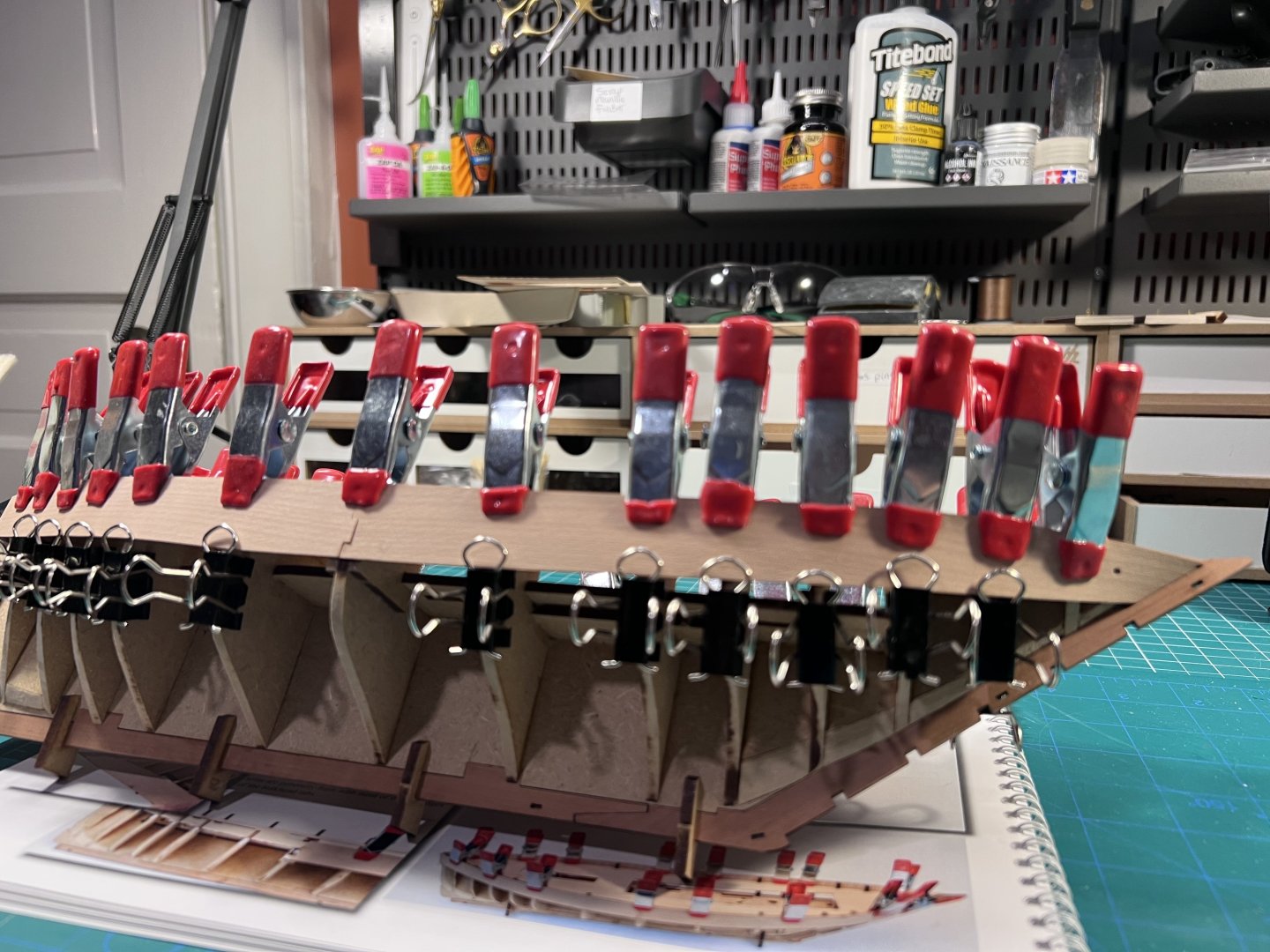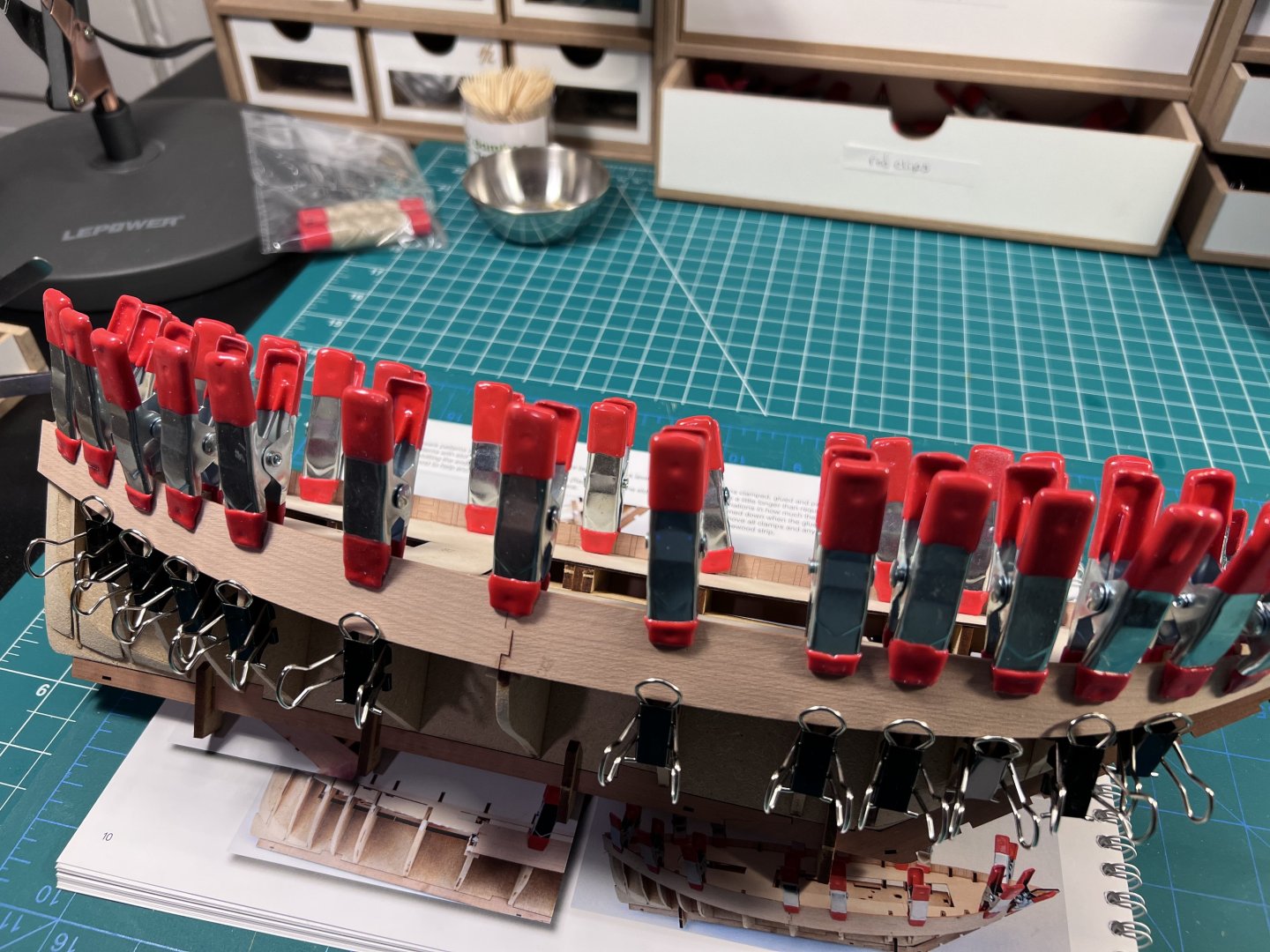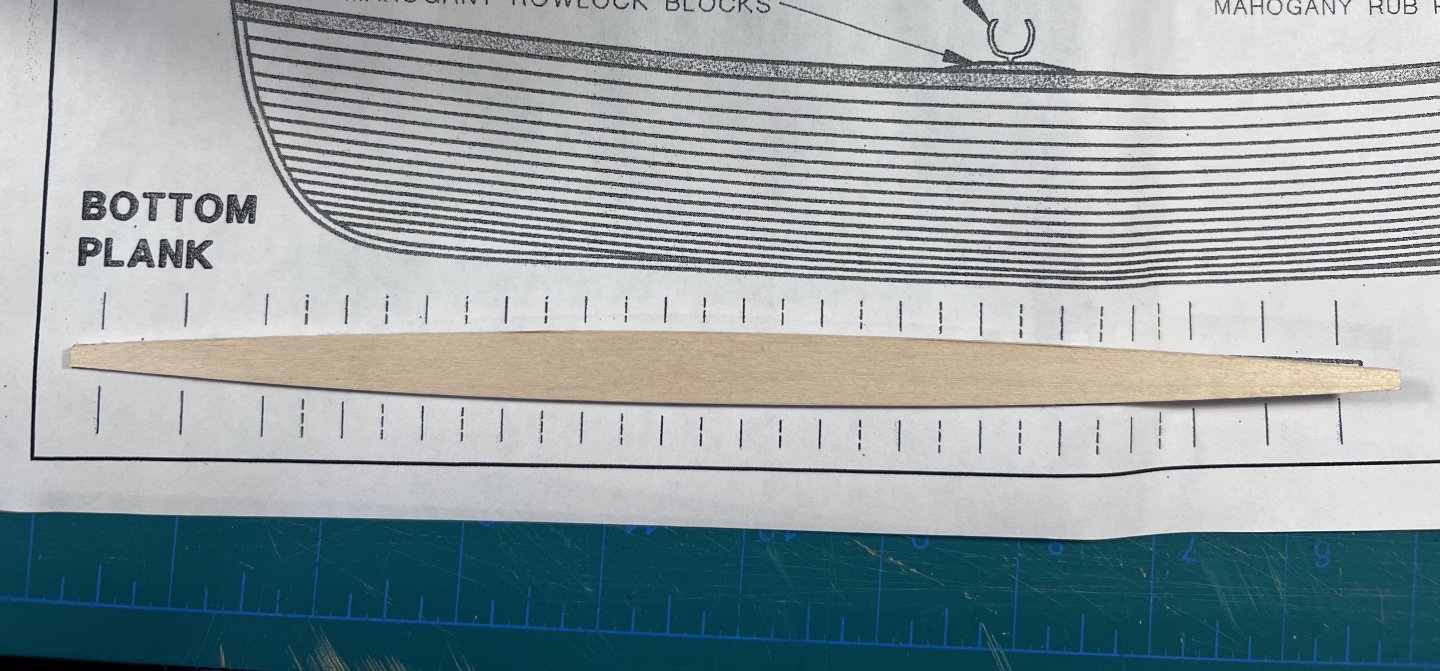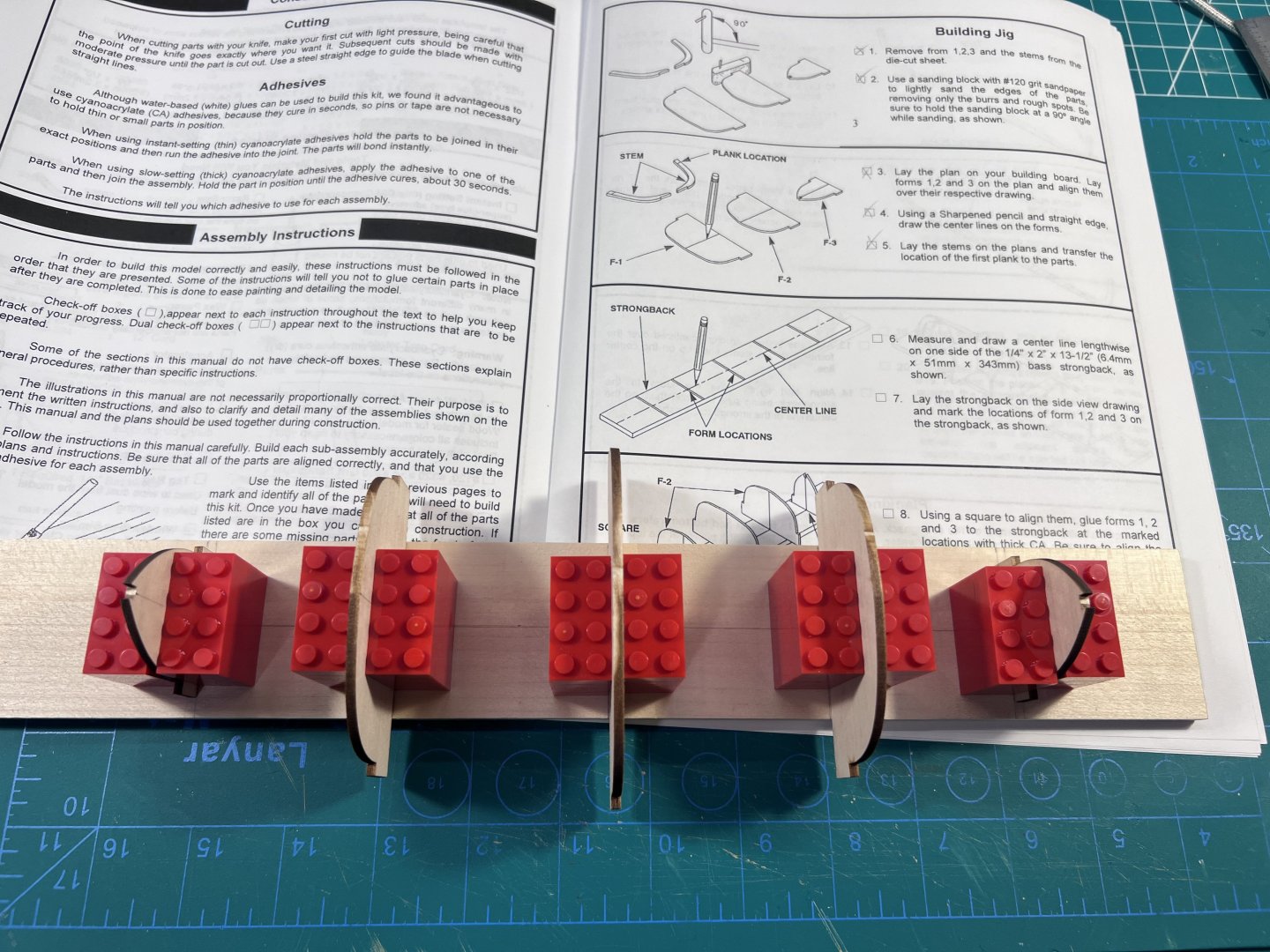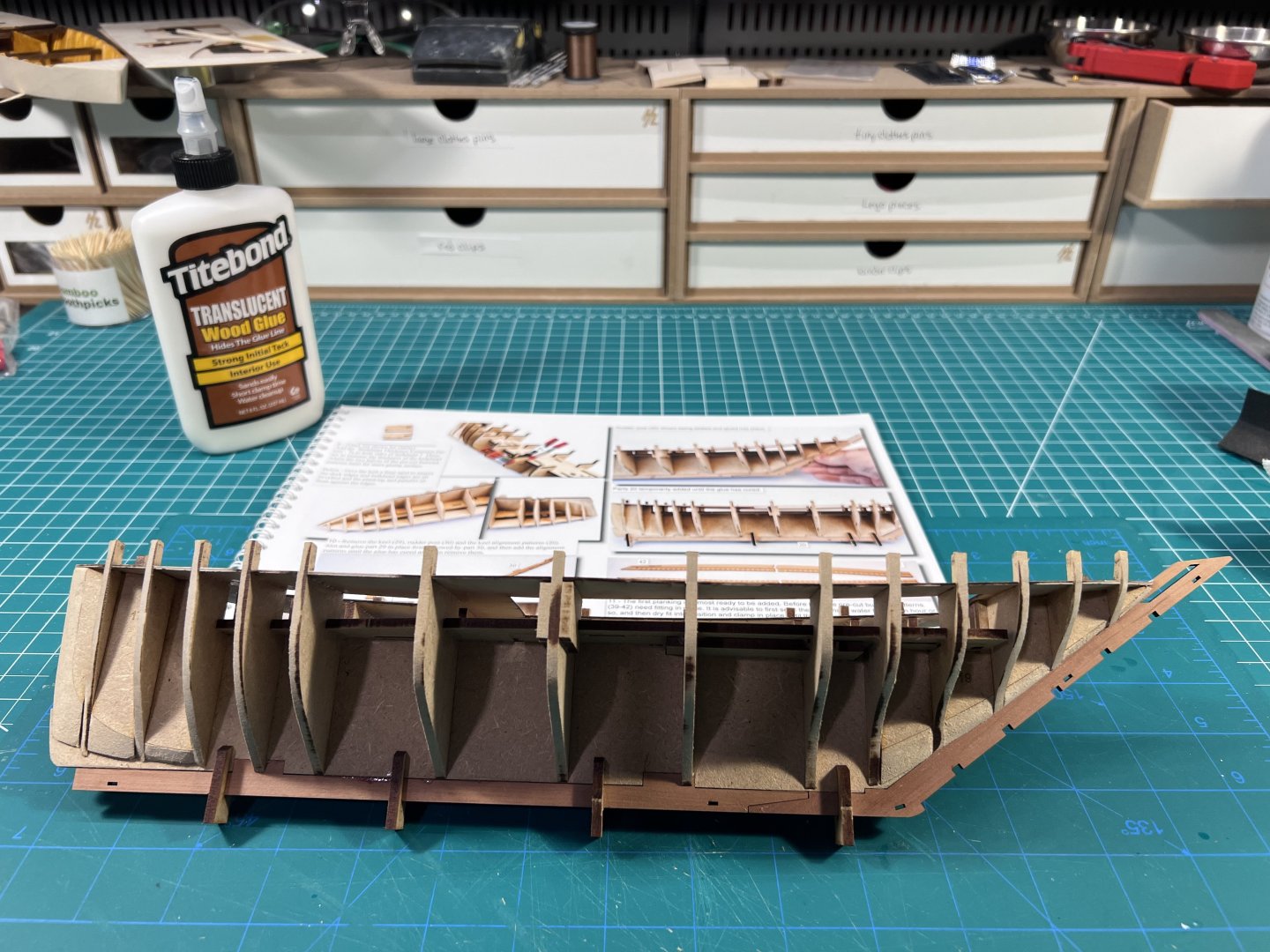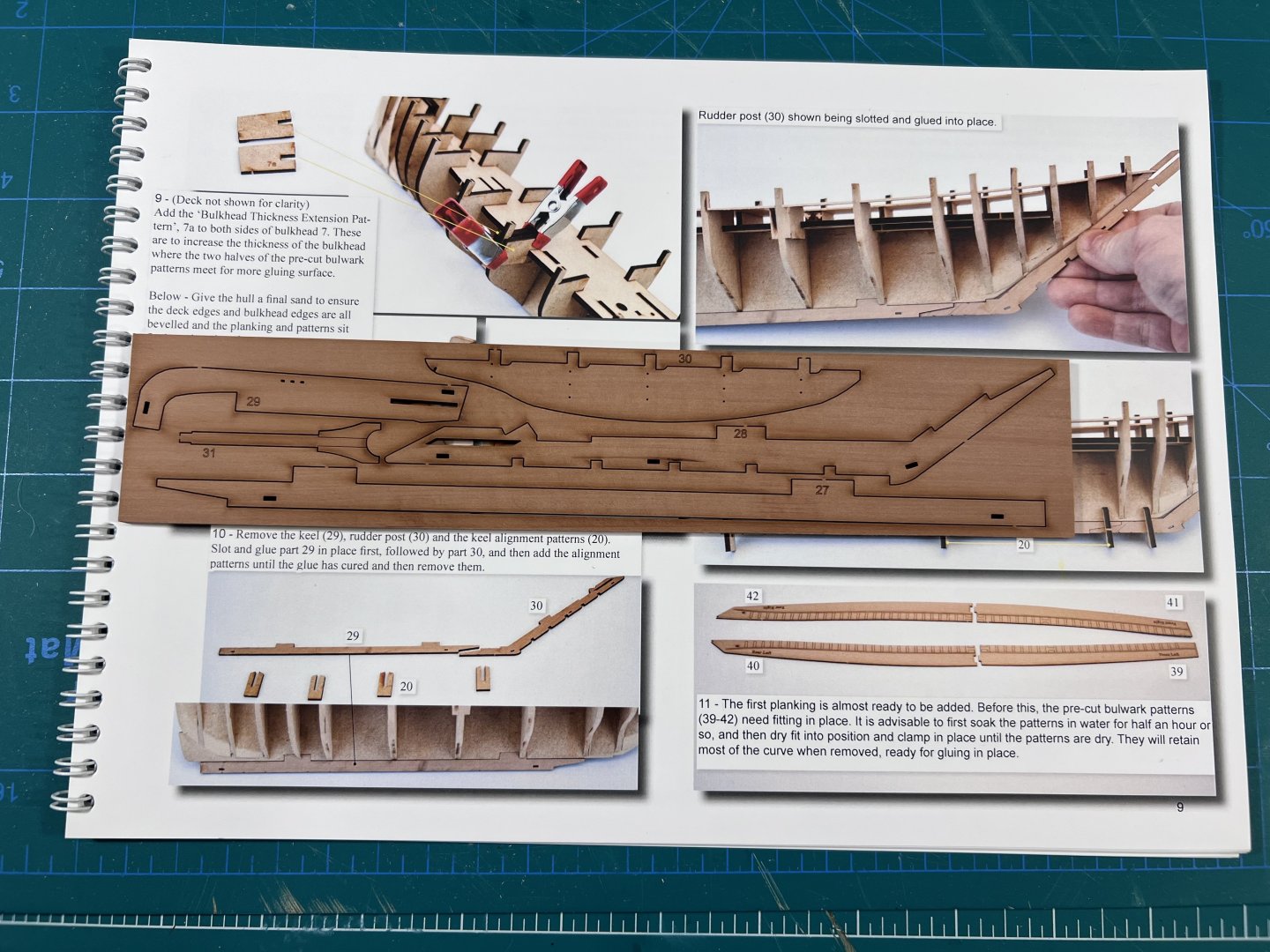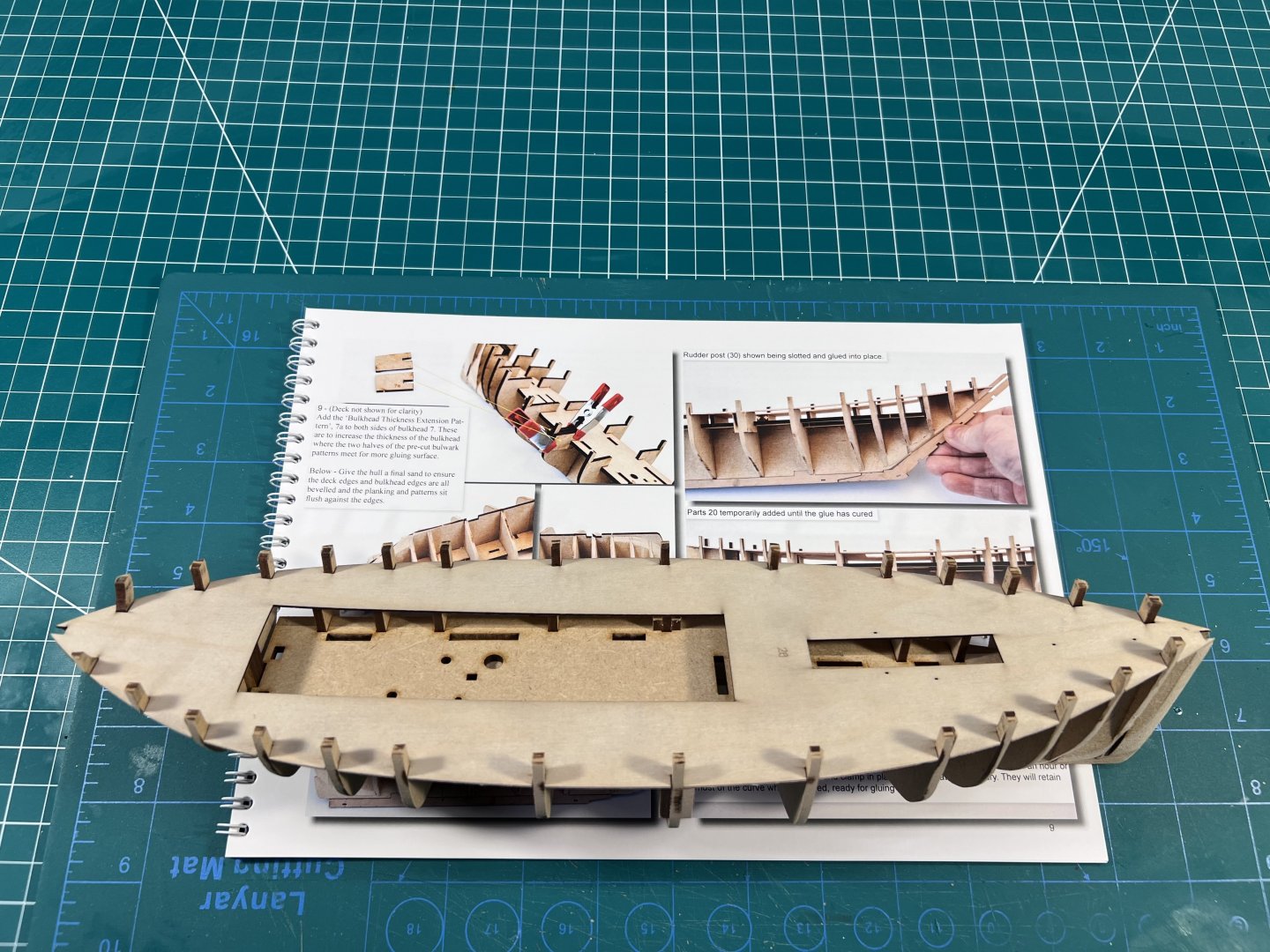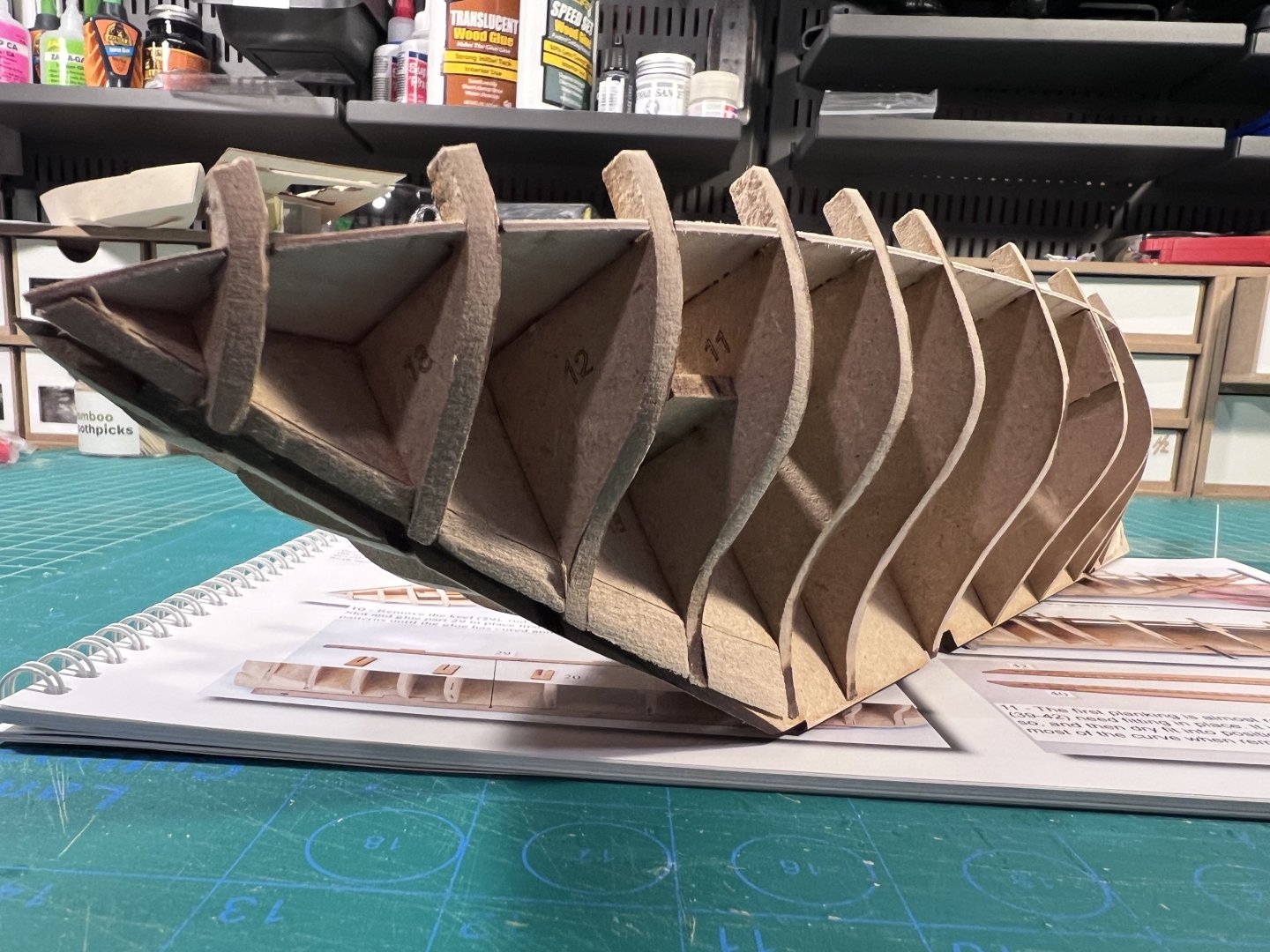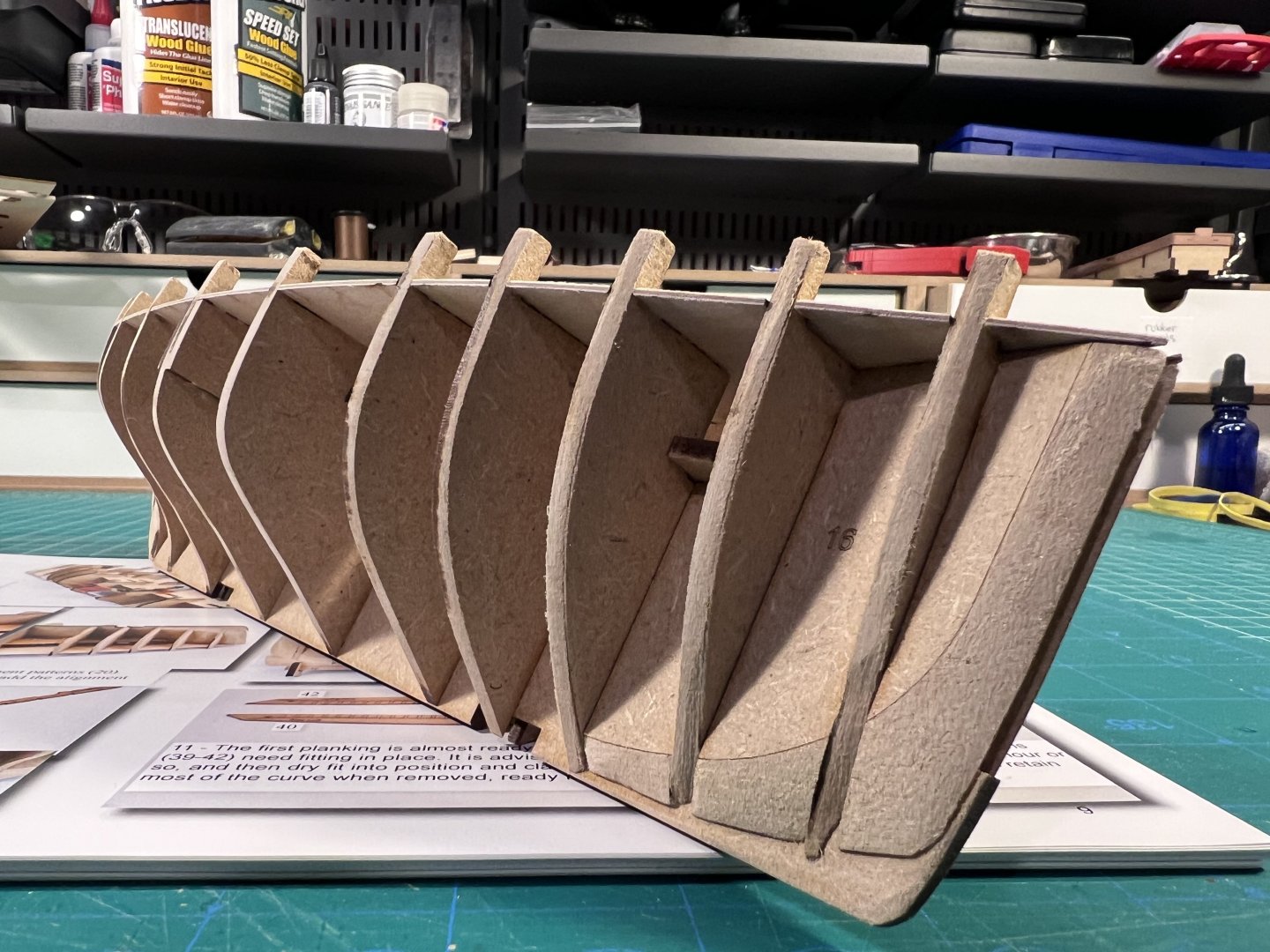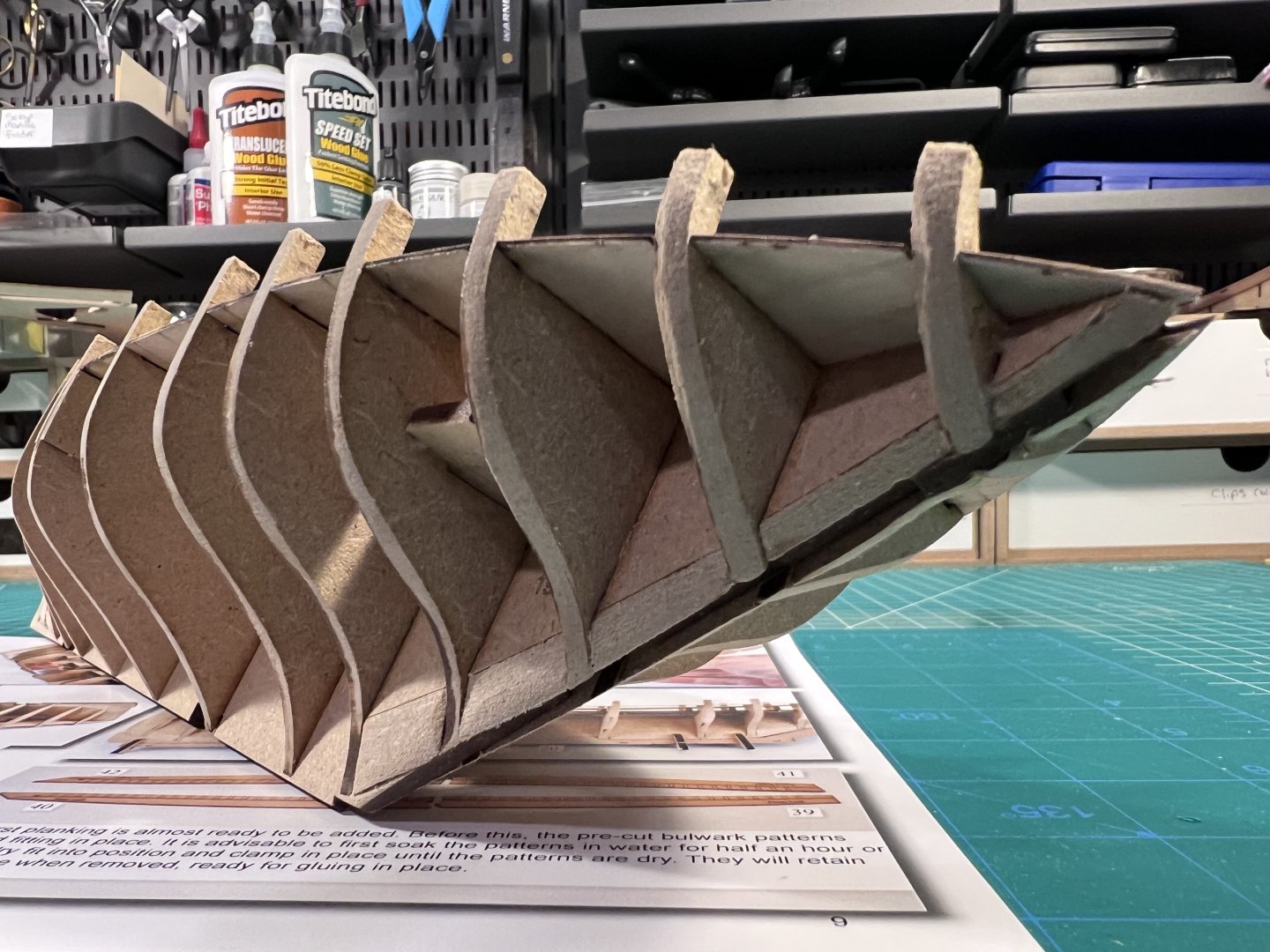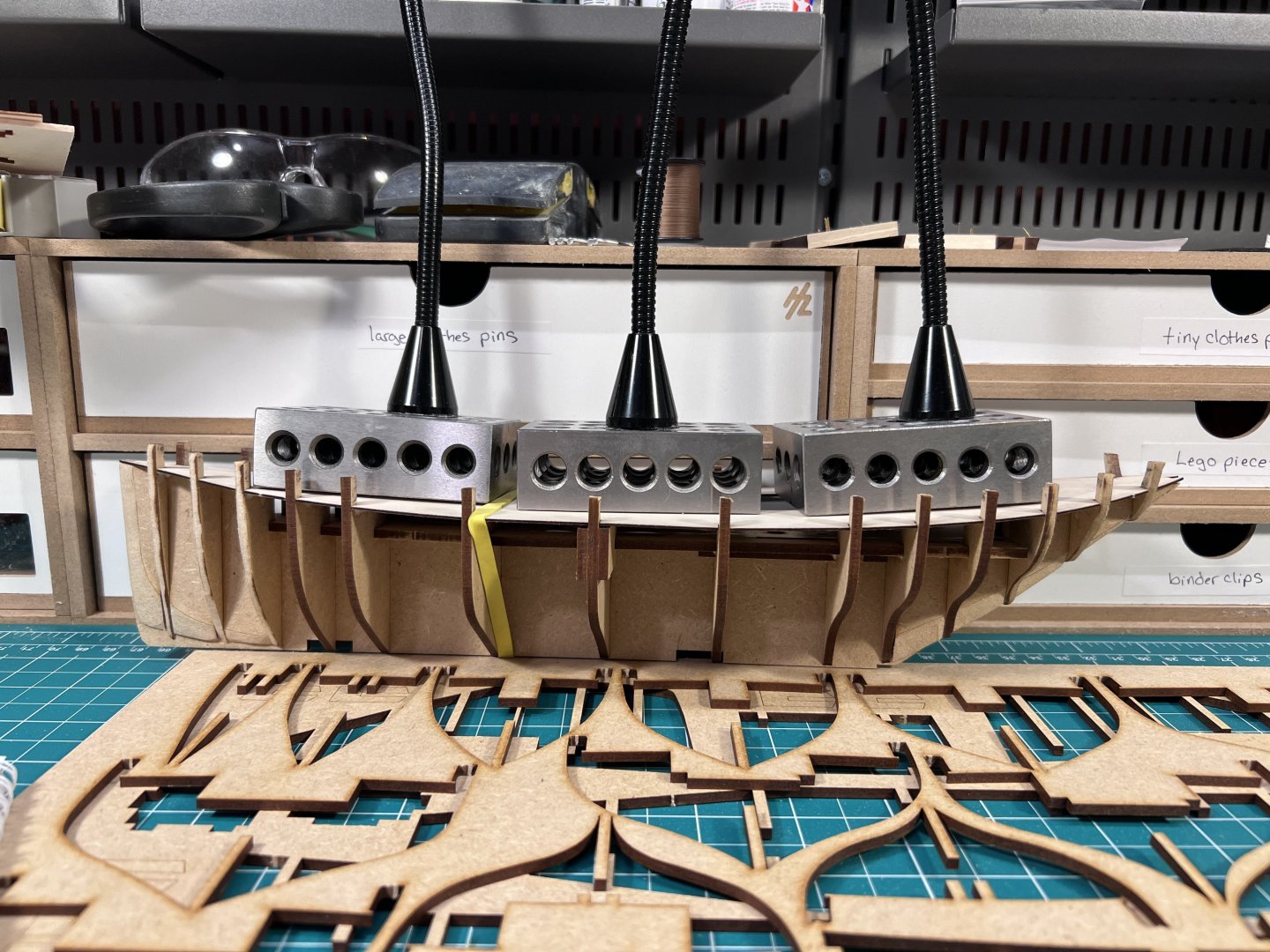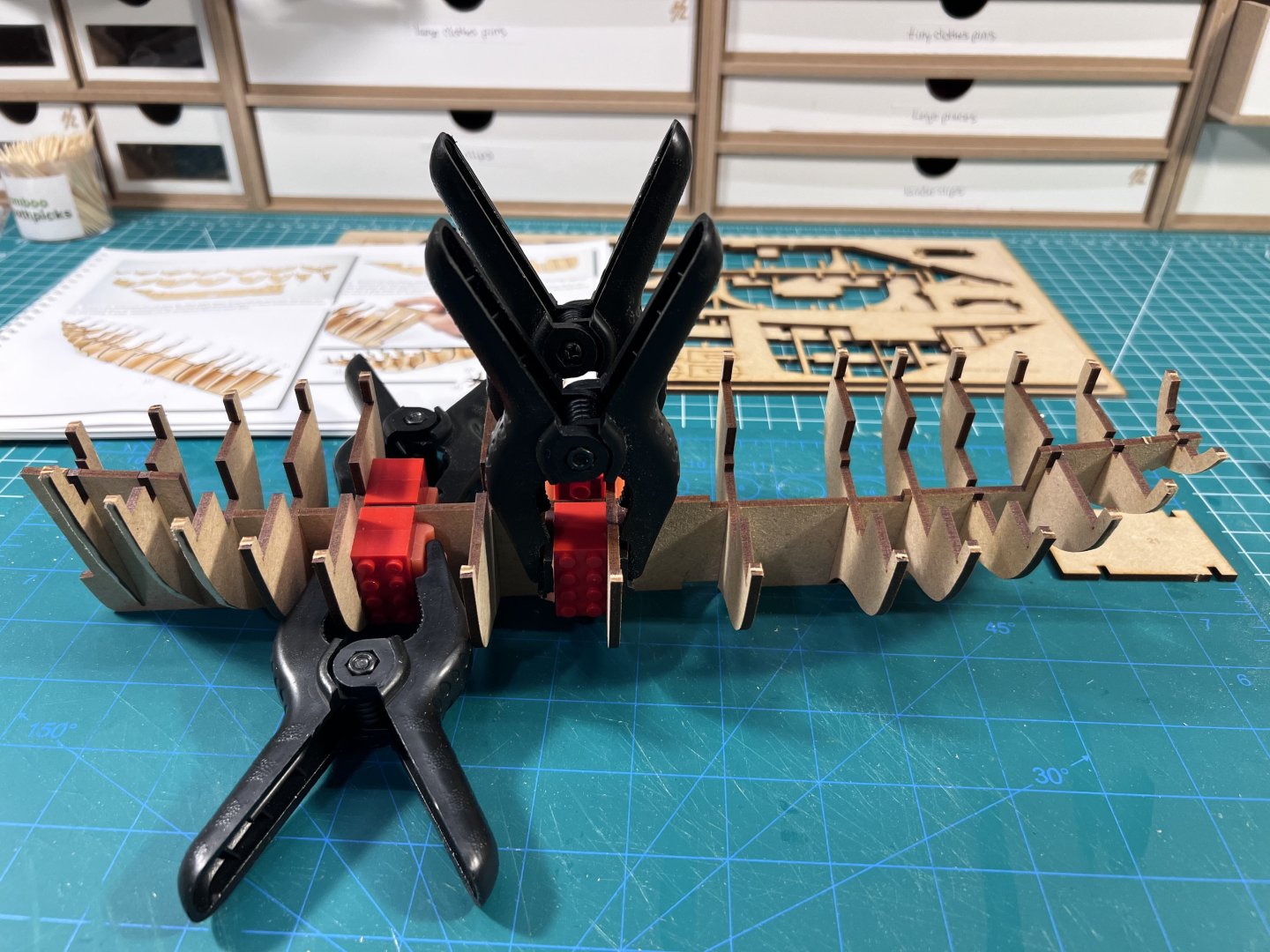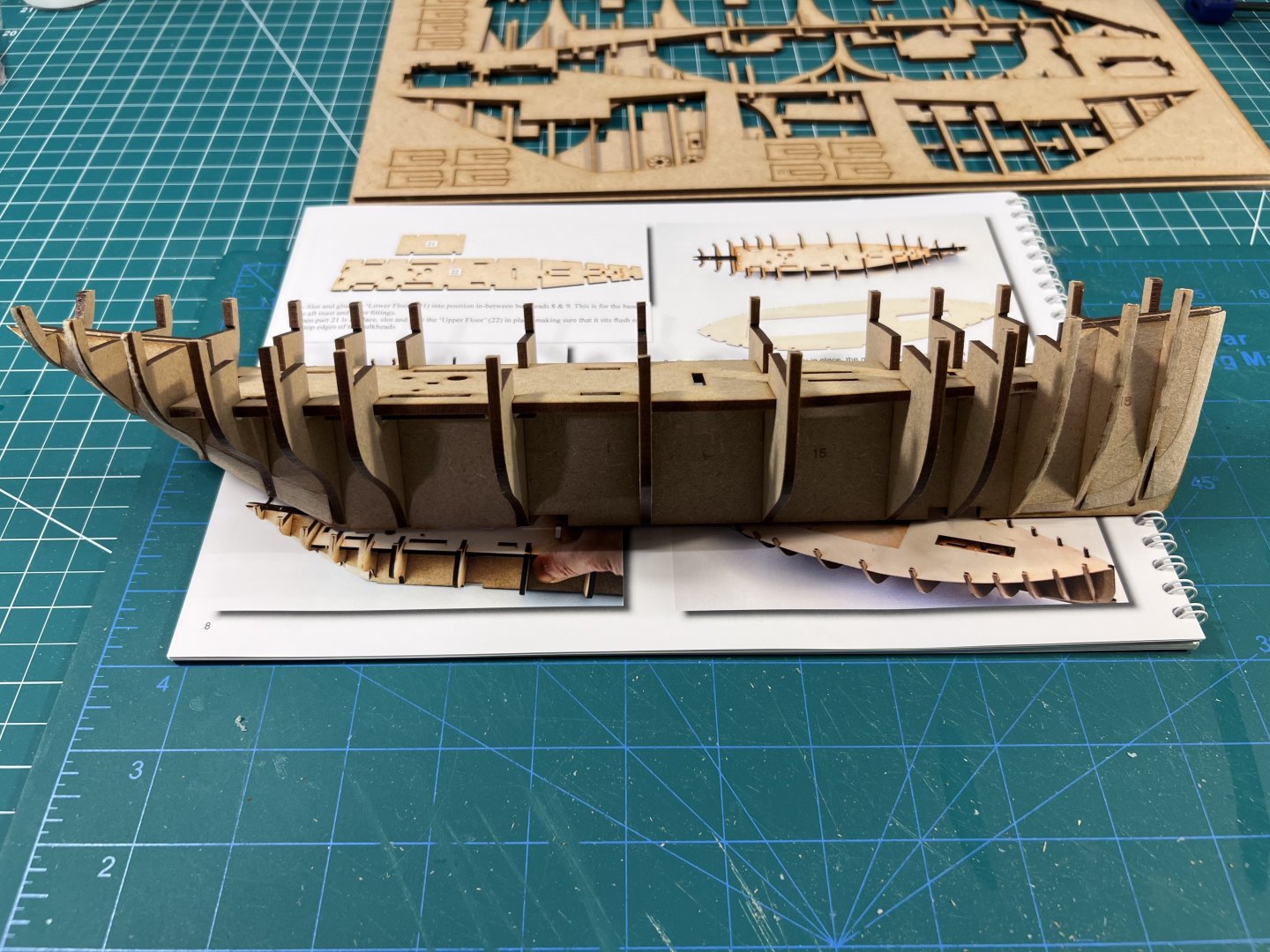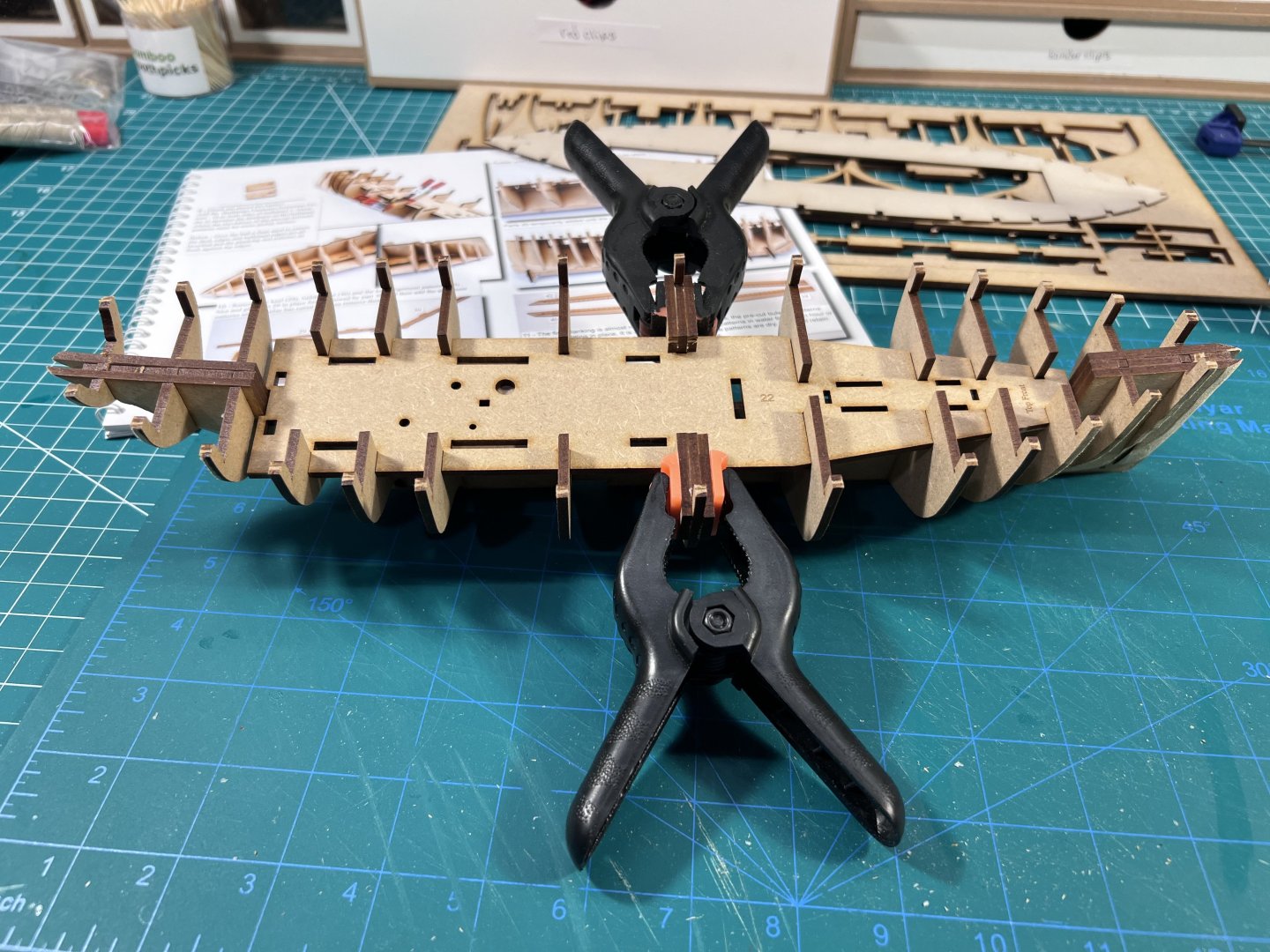
palmerit
NRG Member-
Posts
975 -
Joined
-
Last visited
Content Type
Profiles
Forums
Gallery
Events
Everything posted by palmerit
-
Great planking job. Not "for a first model". Just great planking job. I'm going to make myself feel better and say that you learned from our (my) mistakes on our first (second, third, ...) attempts.
- 52 replies
-
- First build
- Cutter
-
(and 2 more)
Tagged with:
-
I shaped the bulwarks to the hull overnight (having soaked them in hot water for maybe 15min). Now they’re glued and clamped in place and I’ll let them dry overnight. Like the instructions say, you don’t add glue to the top tabs where the red clips are secured because those tabs will be removed later.
- 29 replies
-
- Lady Isabella
- zulu
-
(and 1 more)
Tagged with:
-
I’m curious what you bought if you’re willing to share.
-
Not that I need any more models for my stash, but who sells these? I know Amazon has some - and I would trust buying them from Amazon Japan - but unless I know the reseller on Amazon, I generally avoid, especially for something as expensive as a model kit. Specifically, is there a reseller in the US? The first site that shows up in a google search for me (in Japan) is https://www.zootoyz.jp.
-
I’m betting the planking will be more fiddly than other models. The planks are pretty narrow and there are lots of them. But we’ll see.
- 24 replies
-
- maine peapod
- midwest products
-
(and 1 more)
Tagged with:
-
Marking rib locations and gluing the stems to the bottom plank. The bottom plank has the rib locations marked.
- 24 replies
-
- maine peapod
- midwest products
-
(and 1 more)
Tagged with:
-
Making the building jig on the building board. Need to glue the centered bulkheads to the board. Instructions say to use CA. I’m using wood glue. Though I used a speed set Titebond for this, with Lego blocks to keep things square.
- 24 replies
-
- maine peapod
- midwest products
-
(and 1 more)
Tagged with:
-
Note to beginners looking for a first (or second) model: This is not a beginner model. It’s small, sure. But the planking with all the thin plank strips is pretty tricky. A fun challenge for a more experienced modeler - especially as a side project - but not a first model. Adding a new small build to work on now and then between other builds. I'm waiting for shaped bulwarks to dry overnight on one model, shellac to dry overnight on another, and wood filler to dry overnight on another. I don't often get a few hours to work on models - and after a busy Saturday writing a challenging report for work - I need to turn my mind off. So I grabbed the Maine Peapod from the shelf that I had bought cheap during a Model Expo name-your-price sale. It's a small model, but after seeing some of the builds, it could be a tricky bit of planking. You might see from other fairly recent build logs that Midwest models were discontinued. They are slowly now being reissued by Model Expo / Model Shipways. From what I can gather, the instructions have barely been updated, except to include an updated map of the sheet parts at the front. The instructions refer to paints and techniques that seem decades old (paint brands that I think no longer exist, using Windex to bend planks which I've never seen in other contexts, using something like electrical tape instead of tamiya tape). The parts are I gather new laser cut patterns from the old model might have had. These models - even small, seemingly simple ones - are more of a challenge to build in many ways than more modern (larger, seemingly more complex) models you see from Vanguard.
- 24 replies
-
- maine peapod
- midwest products
-
(and 1 more)
Tagged with:
-
One thing I like about this boat is how weird it is - at least to me. The diagonal section is where the rudder attaches. I don’t think I’ve seen a boat with a 45 degree rudder like that. The 90 degree on the other end is the bow.
- 29 replies
-
- Lady Isabella
- zulu
-
(and 1 more)
Tagged with:
-
Note that on step 10 some of the pieces are mislabeled (29 in the instructions is 27 on the sheet, 30 in the instructions is 28 on the sheet).
- 29 replies
-
- Lady Isabella
- zulu
-
(and 1 more)
Tagged with:
-
It’s interesting that the instructions don’t really describe “fairing” the hull - just sanding to ensure that all the bulkheads are bevelled (I know that’s the same thing). This is certainly the easiest hull I’ve faired. Now looking, I have a few spots to fix but it’s close. Thought I’d include photos in case someone new doing this model wondered what it should look like. As recommended, I’d definitely recommend “pre-fairing” the bulkhead pieces - easiest to do using a Dremel with a sanding cylinder. Only a few need to be done. The most extreme are the filling pieces front and back to secure everything tight. These pieces would be a hassle to fair from scratch on the model.
- 29 replies
-
- Lady Isabella
- zulu
-
(and 1 more)
Tagged with:
-
- 29 replies
-
- Lady Isabella
- zulu
-
(and 1 more)
Tagged with:
-
Putting together the bulkheads and other supports. I can see the engineering genesis from this early model (one of the first Vanguard models) to the more recent models in terms of the various kinds of supports and internal architecture. Thus one goes together really well and the bulkheads essentially go into place square, but these ones are glued into place whereas the Sherbourne and Ranger were assembled without glue and then glue was added later to where the pieces come together for some redundancy.
- 29 replies
-
- Lady Isabella
- zulu
-
(and 1 more)
Tagged with:
-
I forgot that I had asked this very same question a year ago. My recommendation is still the same as what I said above. You can see other responses. And how I ended up getting the Duchess, which will be a few models from now.
-
I'd recommend a Vanguard Model. The Sherbourne is highly recommended. There are also the "fishing boats" - I've done the Ranger, now doing the Zulu 'Lady Isabella', have the Erycina on the shelf. Of course there are more complex Vanguard models, but I'd imagine any of these Novice boats would still be a significant challenge with lots to learn after the Bounty Launch. And the end result looks great. The Sherbourne was my first - though in parallel I worked on the Model Shipways Shipwright boats (Dory, Pram, Smack) and the NRG Half Hull and a Lego model of the Endurance. After the fishing boat, I'm probably going to the Vanguard Grecian. Have the Vanguard Duchess on the shelf. I bought it assuming it would be my second model. But then decided I'd have more fun learning more and trying more things with less complicated models. On the Vanguard models, the materials are great, the design is great, the instructions are great, the end result is great - even if like me you don't really know what you're doing. Easy to recommend.
-
Planking disaster
palmerit replied to sgrez's topic in Building, Framing, Planking and plating a ships hull and deck
I've seen that some people use contact cement and swear by it. Others say just as strongly to stay away. I'd also suggest wood glue. I tried using CA glue on entire planks - the Vanguard instructions describe doing that - but I made a mess. CA doesn't give me enough time to make sure a plank is in place. Maybe someday I'll be able to use CA when planking more often. The only time I use CA glue when planking is when securing the plank end to the bow. I just apply CA to the very end. If I mess up, it's easy to get acetone in there to undo the glue. Using CA on the very end - assuming you really get it set in the right way in the right place - can then make it easier to apply wood glue to the rest of the plank. Also, the bow (and stern) ends are often the hardest to secure in place to let wood glue dry. While some say if the plank is shaped right you don't need any clamps or rubber bands, there's also the fact that wood glue sets better under pressure, at least from what I've read. I'm no expert though. Still trying to work it out for myself and exploring different options. -
I'm going to follow because I want to know how to use brass black properly. Painting brass parts is also challenging, even when finding a good primer for PE parts. I bought, but have yet to use, and to compare, Birchwood Brass Black and Blue Jacket's Brass Black 52. I saw both recommended here. Again, I haven't tried them or compared them. I've seen some posts here that have all sorts of complex multi-step processes, such as first using acetone, using distilled water, avoiding touching pieces because of body oils, sometimes doing a light sanding, and the like. When I've seen Olha Batchvarov use brass black on her YouTube videos, she's used no prep. I can't remember what brand she uses.
- 20 replies
-
- Sherbourne
- Vanguard Models
-
(and 1 more)
Tagged with:
-
Great choices. You'll find that the Sherbourne is definitely a step up from the Dory, Pram, and Smack. The biggest new part of the Sherbourne will be doing the strip planking, which none of the Master Shipwright models require. And the rigging is definitely more complicated. The Modelkitstuff videos of the Sherbourne are great. Also check out the planking tutorials at the top under Modeling Techniques : https://modelshipworld.com/forum/98-planking-downloads-and-tutorials-and-videos/ After you do the Sherbourne, the Vanguard fishing boats are a nice next option I think. Probably similar in difficulty to the Sherbourne. But planking and rigging take a few simpler models to figure out. You'd probably be able to do a harder model, but these other Novice models still provide a nice challenge and an opportunity to learn more. I imagine the boats you bought before and half shelved are fairly "old school" models (the Vanguard representing a new approach), which require a lot more work to get pieces aligned and square, and a lot more hand-shaping of pieces, and far less detailed instructions. I'm going to do several more Vanguard models before I give one of those models a try myself. I have the Model Shipways Syren in my stash, which is probably one of the best of that style, being designed by Chuck Passaro, but it'll be several more models before I try to tackle that one. When you get to planking, definitely check out how bad some of the first attempts can be - mine being one of the worst. Since the Sherbourne is painted, you can use a lot of filler and sanding to make it better. You can see where I started and where I ended up. Kind of miracle. I found the NRG Half Hull model a good experience to better understand planking. It's a different kind of modeling (it's a half hull, not a full model, and it involves cutting out planks to shape from sheets rather than bending long planks into shape). But at least for me it gave me a good sense of what I'm trying to achieve when planking when bending planks in two directions.
-
With this Vanguard model you need to pull out the plans early to use plan sheet 1 to find where the parts are on some of the laser cut sheets. The Sherbourne and Ranger had the part numbers on the sheets.
- 29 replies
-
- Lady Isabella
- zulu
-
(and 1 more)
Tagged with:
-
Reading is important. You make the superstructure and slot into the lower deck without gluing to make sure it has the right form. The photos might make you think you glue the superstructure to the lower deck. You don’t until much later, despite the photo.
- 29 replies
-
- Lady Isabella
- zulu
-
(and 1 more)
Tagged with:
-
Like I've done on some - not all - other build logs, I'm going to have the second post be a place where I add some notes for other people who might be working on this boat so they don't need to search through the whole build log. No guarantees I'll add anything interesting here. But if I do, I hope it's helpful. The first bit is buying the replacement premium sails. I don't know if they are sold anywhere but the Vanguard web site: https://vanguardmodels.co.uk/products/zulu-lady-isabella The shipping cost to the US isn’t too bad. These are cloth sails after all.
- 29 replies
-
- Lady Isabella
- zulu
-
(and 1 more)
Tagged with:
-
My next Vanguard model, which I've had in my stash since last fall, is the Zulu ‘Lady Isabella’, one of the six fishing boat models Vanguard currently sells. Like the Sherbourne and the Ranger, this is a Novice kit. Its rigging looks to be a lot simpler than both the Sherbourne and the Ranger. This model is number 03, one of the first Vanguard models, so it'll be interesting to see how different it is from the other two models I've built. Of the fishing boat models, the Ranger (Novice) (which I just completed), the Lady Isabella (Novice), and Erycina (Amateur) are a bit larger boats, with the Lady Eleanor (Novice), Saucy Jack (Amateur), and Nisha (Amateur) a bit smaller boats - all are 1:64. This kit comes with sails. The sails that came with the Ranger weren't the best. I had seen that sails are an option online on Vanguard's web site for the Zulu (and the Erycina, which I have in my stash). I reached out to Chris Watton and he said that the ones for sale online are premium quality (and that once the free sails have been used up, these kits will again be sold without sails). I think all the fishing boats have optional premium sails. I ordered a set for the Lady Isabella and for the Erycina to replace the sets that come with the kits. I'm also planning to order blocks and rope from Syren for this one, maybe the next one too. This hull seems to have a bit at the top that's left unpainted. My hope is that my planking skills are up to the challenge. Otherwise, I'll just paint again.
- 29 replies
-
- Lady Isabella
- zulu
-
(and 1 more)
Tagged with:
-
I’m done with the Vanguard Ranger. It’s my second Vanguard model after the Sherbourne. The first couple of photos are in progress shots, but the rest are of the completed model. I still have a few clips holding some rigging while it dries (the tied off rope has a coat of diluted white PVA), but I’m done. I’m going to try to take some nicer photos with my Nikon - maybe next weekend - still need to do the same for my Sherbourne that I finished a while back. My next Vanguard model (in my stash) is the Zulu ‘Lady Isabella’, another fishing boat. For this one (and the Erycina, also in my stash) I’ve ordered from Vanguard the nicer sails instead of using the ones that come with the kit. I’m thinking of also getting blocks and line from Syren.
- 133 replies
-
- Ranger
- vanguard models
-
(and 1 more)
Tagged with:
About us
Modelshipworld - Advancing Ship Modeling through Research
SSL Secured
Your security is important for us so this Website is SSL-Secured
NRG Mailing Address
Nautical Research Guild
237 South Lincoln Street
Westmont IL, 60559-1917
Model Ship World ® and the MSW logo are Registered Trademarks, and belong to the Nautical Research Guild (United States Patent and Trademark Office: No. 6,929,264 & No. 6,929,274, registered Dec. 20, 2022)
Helpful Links
About the NRG
If you enjoy building ship models that are historically accurate as well as beautiful, then The Nautical Research Guild (NRG) is just right for you.
The Guild is a non-profit educational organization whose mission is to “Advance Ship Modeling Through Research”. We provide support to our members in their efforts to raise the quality of their model ships.
The Nautical Research Guild has published our world-renowned quarterly magazine, The Nautical Research Journal, since 1955. The pages of the Journal are full of articles by accomplished ship modelers who show you how they create those exquisite details on their models, and by maritime historians who show you the correct details to build. The Journal is available in both print and digital editions. Go to the NRG web site (www.thenrg.org) to download a complimentary digital copy of the Journal. The NRG also publishes plan sets, books and compilations of back issues of the Journal and the former Ships in Scale and Model Ship Builder magazines.


